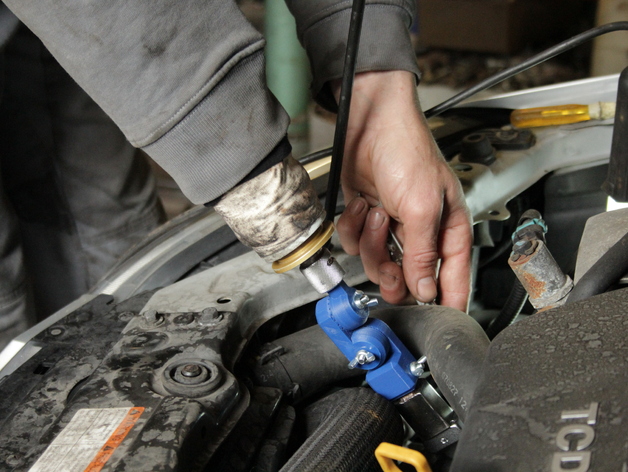
Prototyping Toolkit for Low-Tech Extensions of a Prosthetic Arm
thingiverse
Goal of the toolkit: This Tool Kit attaches to a Prosthetic Work-Arm, enabling persons with an arm amputation to attach 'low-tech' tools to their prosthesis. Its purpose is to give these individuals the ability to test and prototype prosthetic arm extensions and search for the right dimensions and positioning. All components of the toolkit were designed to be 3D printed or laser cut, making it available off-the-shelf. This allows a tailored and custom-made Assistive Tool to be achieved. The Toolkit is extremely useful in a rehabilitation environment as it enables occupational therapists, patients, and others to co-create custom-made DIY-Assistive Technology that perfectly fits one patient's needs. Once the person knows what position, dimensioning, and adjustability are comfortable, the tool can be easily reproduced in steel or more durable materials. So, the Toolkit mainly functions as a prototyping and testing step before an Assistive Tool is made immediately out of steel. The kit was designed for Digital Production, consisting of 3D printed and laser cut components. Some pictures were added of the prototyping phase for a wrench-aid as an example. Feel free to design & share new components for other applications; it can help a lot of people worldwide! More information can be found on the instructables page: http://www.instructables.com/id/Prototyping-Toolkit-for-Low-Tech-Extensions-of-a-P/ Print Settings Printer Brand: Ultimaker Printer: Ultimaker 2 Rafts: Doesn't Matter Supports: No Infill: Minimum 50% Post-Printing Laser Cutting The laser cut components allow you to make the Toolkit longer (cross-shaped parts) or make it move freely (C-shaped rings). However, if no laser cutter is available, a 15x15mm standard profile can also be used.
With this file you will be able to print Prototyping Toolkit for Low-Tech Extensions of a Prosthetic Arm with your 3D printer. Click on the button and save the file on your computer to work, edit or customize your design. You can also find more 3D designs for printers on Prototyping Toolkit for Low-Tech Extensions of a Prosthetic Arm.
